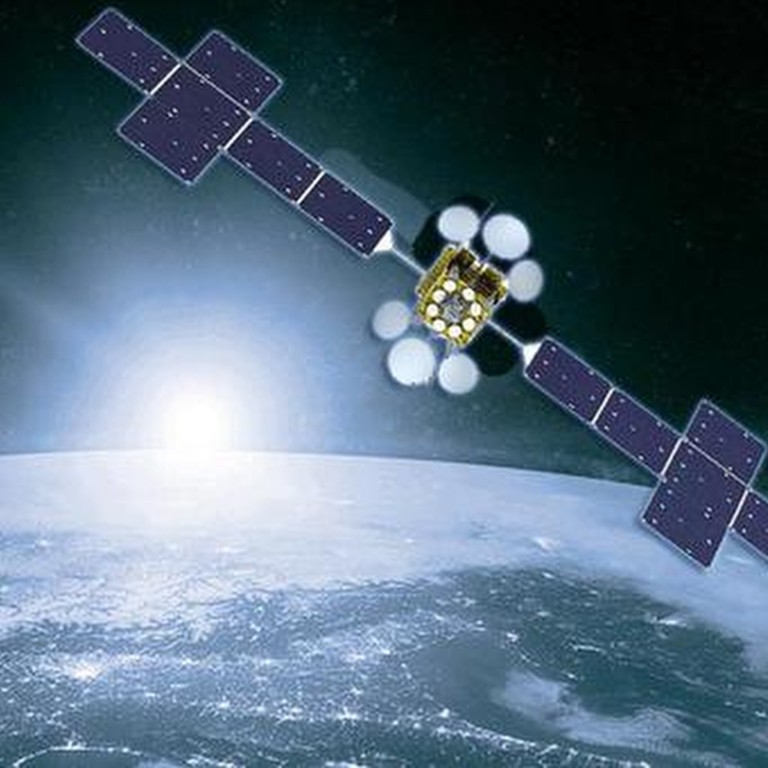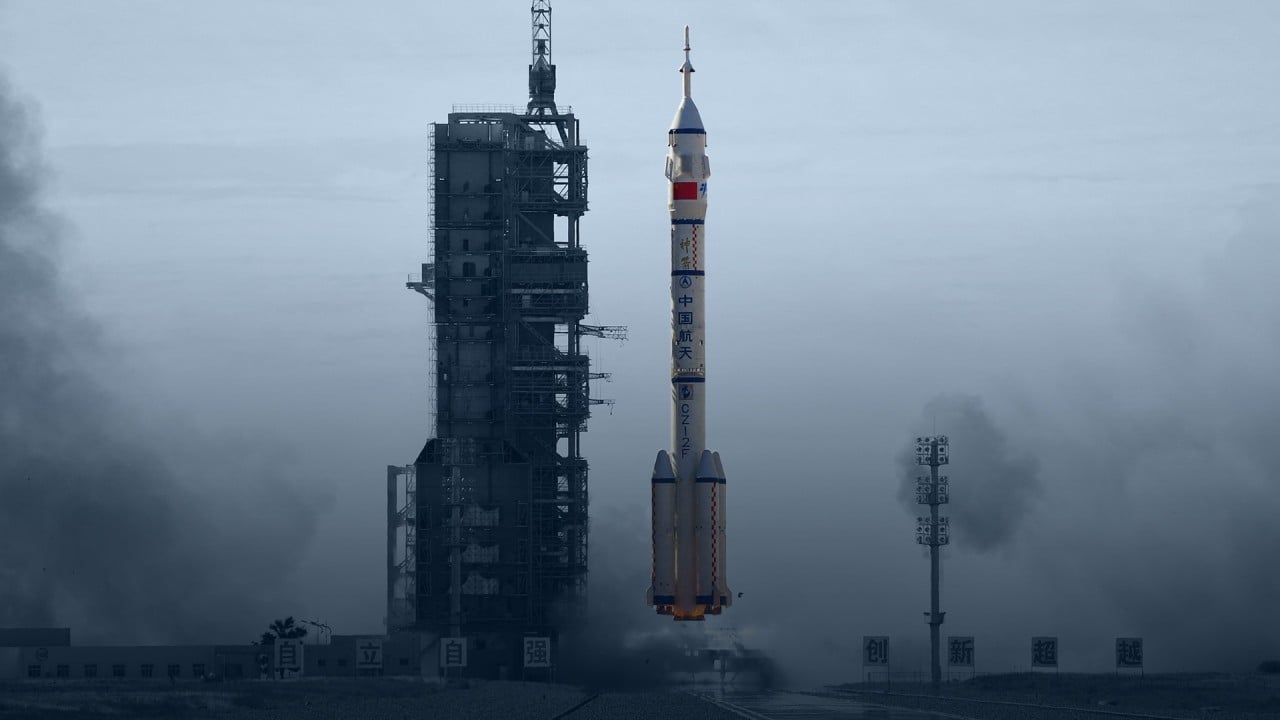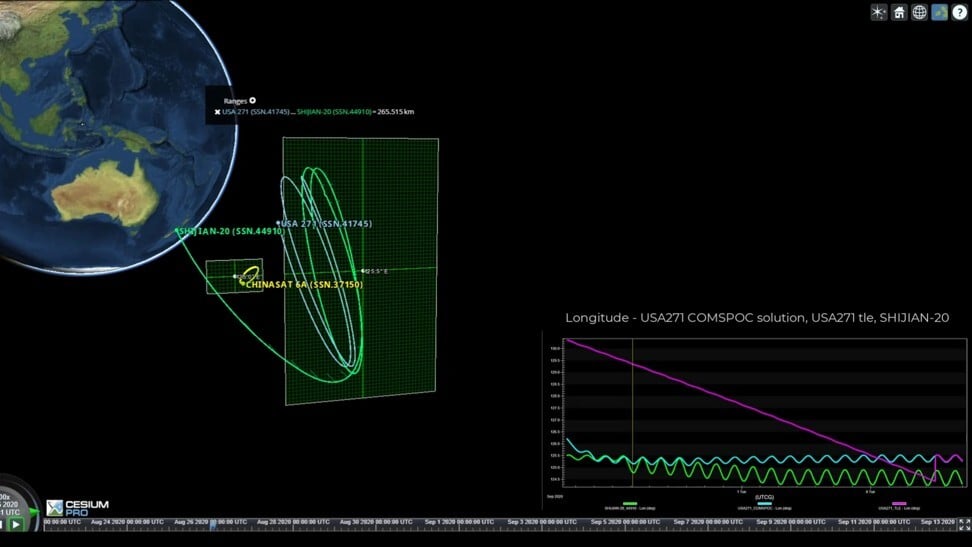
Chinese satellite hints at space warfare prowess by dodging US surveillance
- Shijian 20, China’s most advanced communication satellite, was approached by US surveillance satellite but reportedly moved away at speed
- Monitoring rivals’ satellites is needed to avoid collisions, but the US is also concerned about Chinese satellites’ potential warfare capabilities
But some defence analysts said the scenario was not new and the incident should not be seen as escalating the rivalry between China and the United States in space.
“It is not difficult to monitor satellites,” said Chinese military commentator Song Zhongping. “The US, Russia and China are all able to monitor each other’s satellites in orbit. But the US will certainly plan its space infrastructure through monitoring the satellites of China and Russia.”
In July, the Shijian 20, China’s heaviest and most advanced communication satellite, was approached in parallel by a US space surveillance satellite, USA 271. The Chinese satellite “rapidly” moved away, US military website Breaking Defence reported on Friday.
The Chinese detected the shadowing of the American satellite, the report said, citing information from space tracking company Commercial Space Operations Centre (ComSpOC).
“They start doing calibration manoeuvres and they’re very, very small manoeuvres, so it’s hard,” said Jim Cooper, the lead for space situational awareness at ComSpOC. “It’s about having the right system that can process and detect those small manoeuvres when you’re that close.”
The ComSpOC data also showed that in 2018, when another Chinese satellite, Tongxin Jishu Shiyan 3, took its position in geosynchronous orbit, the upper stage of the rocket that delivered the satellite had been loaded with extra fuel to enable it to stay parallel to it, to act as a decoy.
Cooper believed that was a tactic to fool an enemy’s network of space situational awareness, and to gain China several days of freedom during which it could “be off doing things that are potentially threatening” while the other country had lost track of where the Chinese satellite was.

05:06
How China’s space programme went from launching satellites to building its own space station
China has launched several satellites said to be “scavengers” that are fitted with robotic arms to grab and steer space debris so that it burns up in the Earth’s atmosphere.
But the Pentagon is concerned that the technology “could be used in a future system for grappling other satellites” and was therefore a concern to the US military, James Dickinson, commander of the US Space Command, told a Congress hearing in April.
A notable example, the Shijian 17, launched in 2016 with a robotic arm, had over the years made a number of “unusual manoeuvres” and varied its position in relation to other satellites while in geostationary orbit above the Earth, according to think tank the Centre for Strategic and International Studies.
Although the Chinese developers said the Shijian 17’s mission was to test “high-orbit space debris observation technologies”, Dickinson said it had the ability to potentially take down US probes in space.
Last week, the Shijian 21, China’s latest model for the “experimental validation of space debris mitigation technology” was delivered to its designated orbit.


